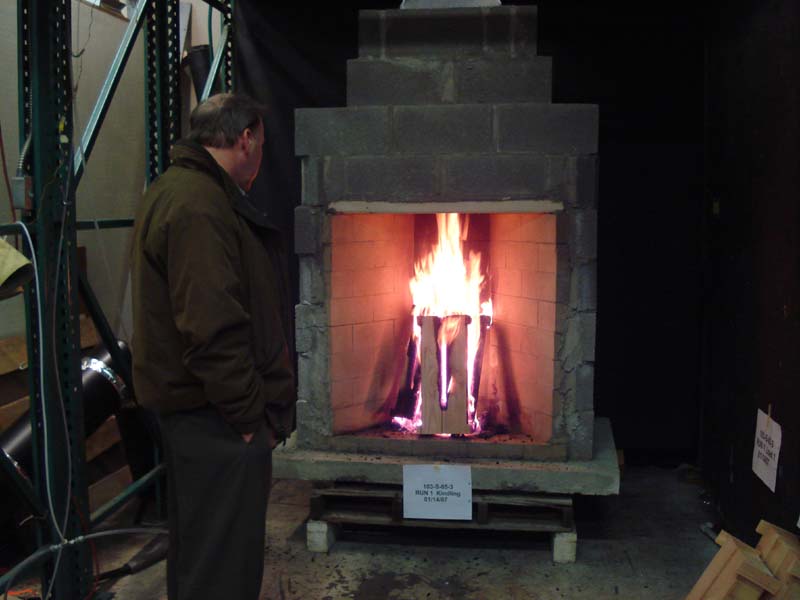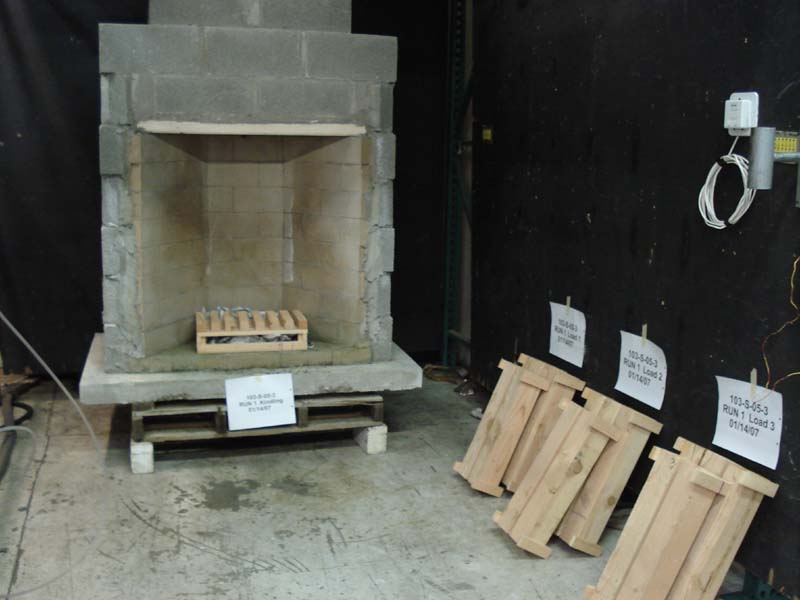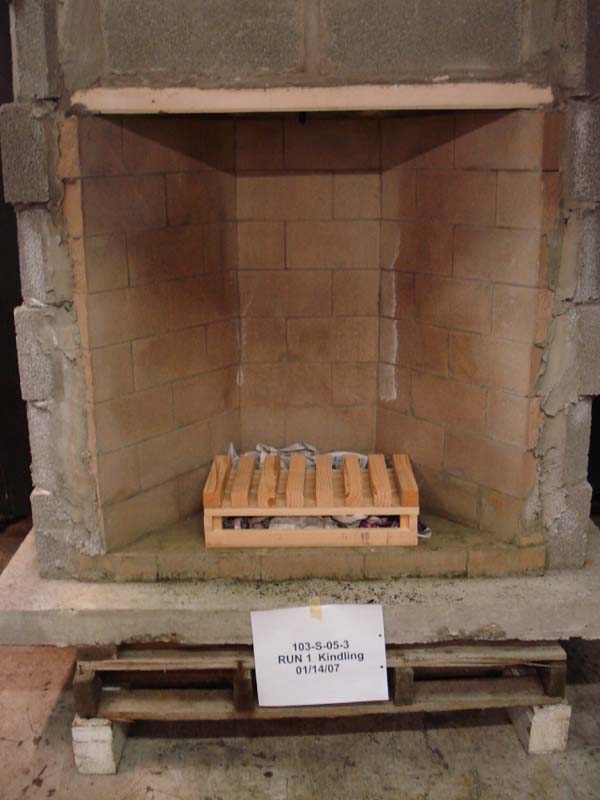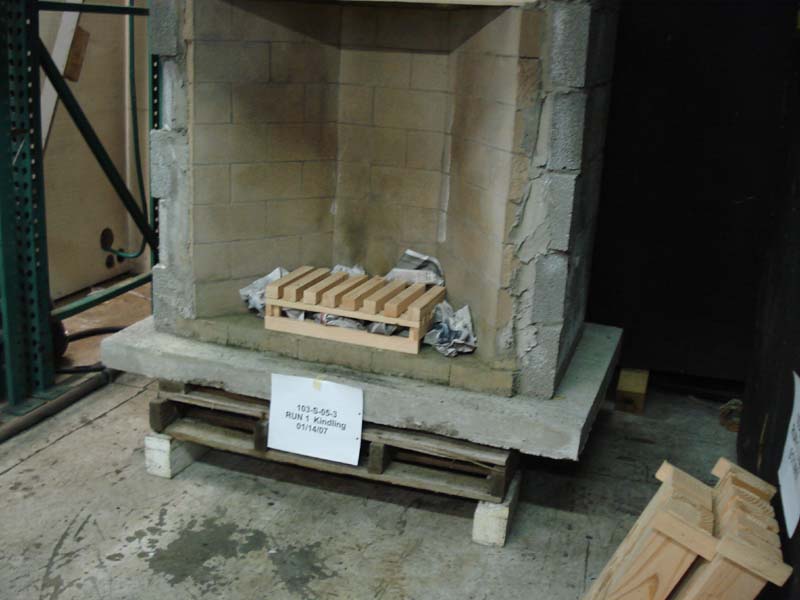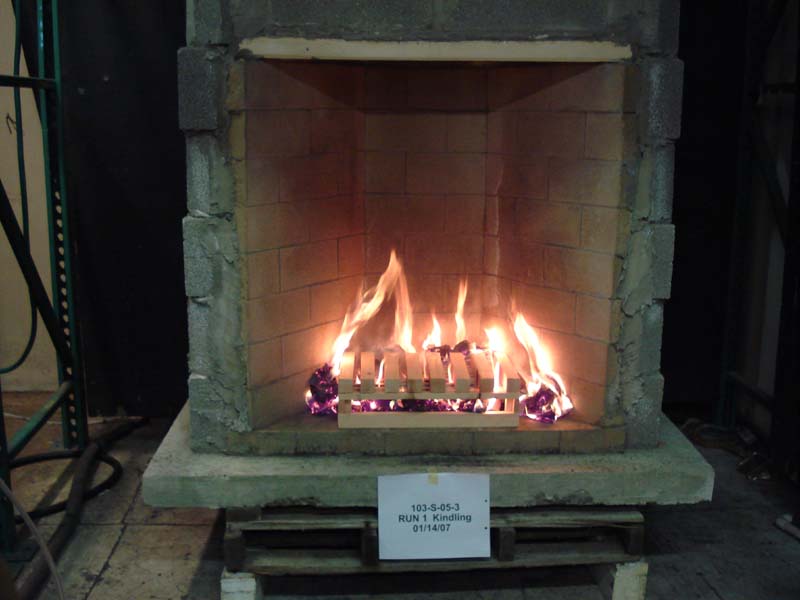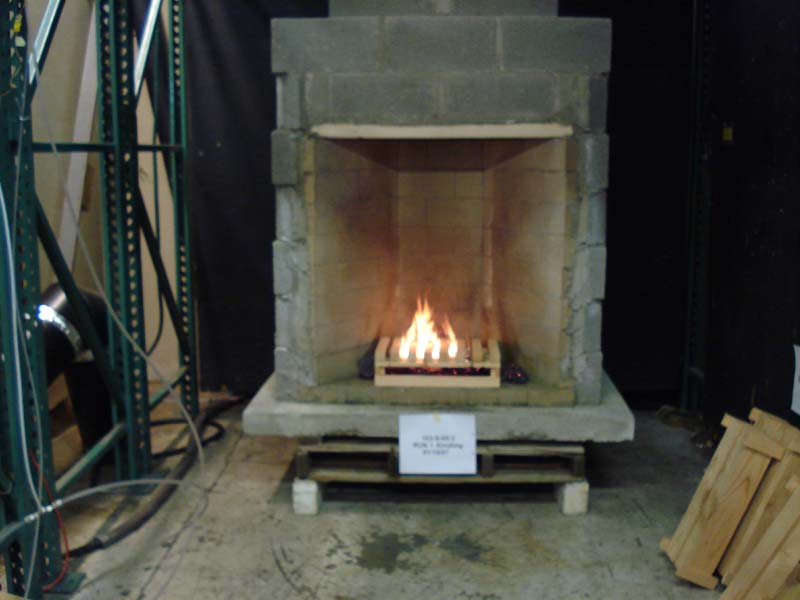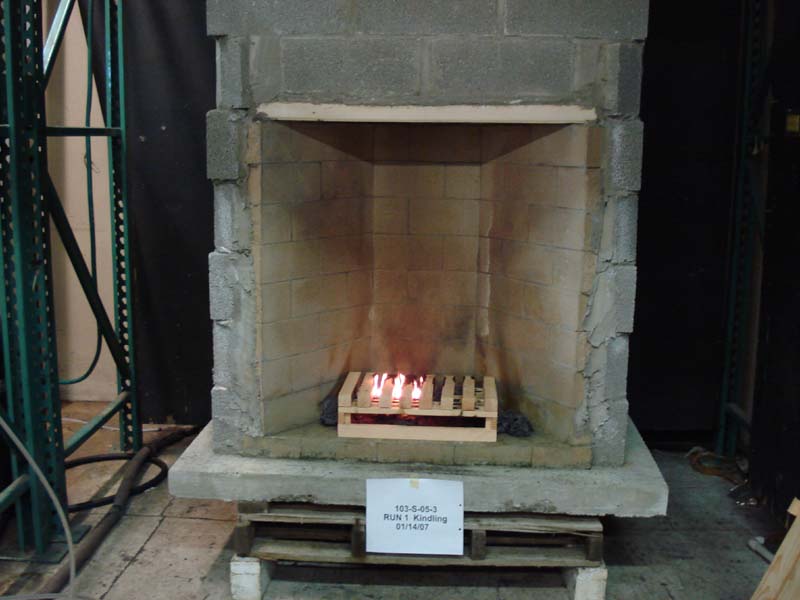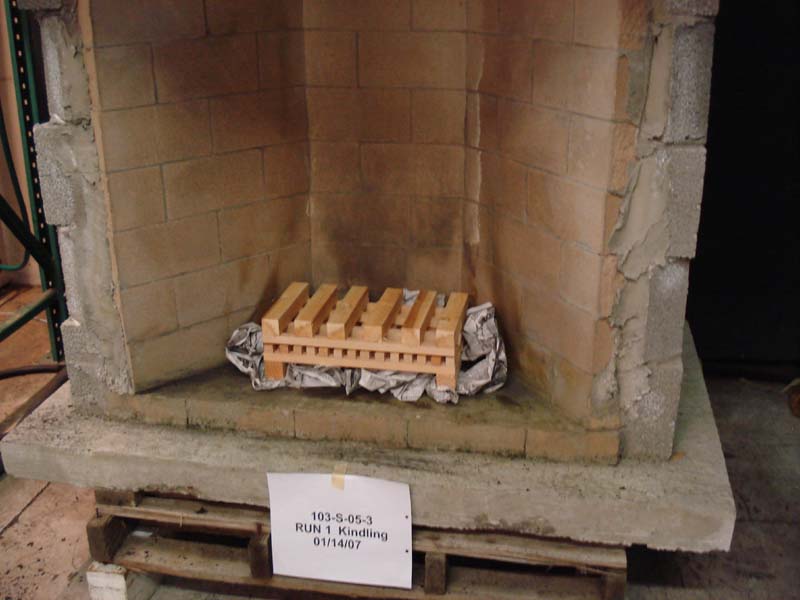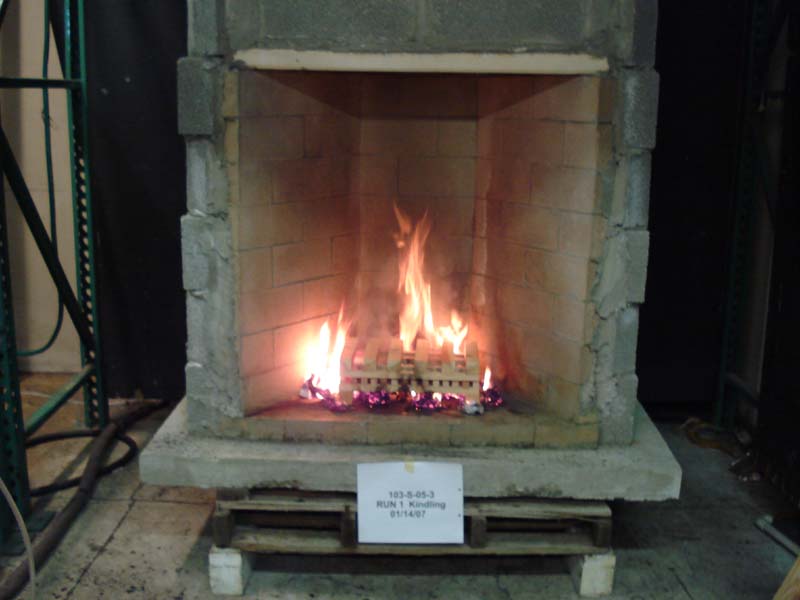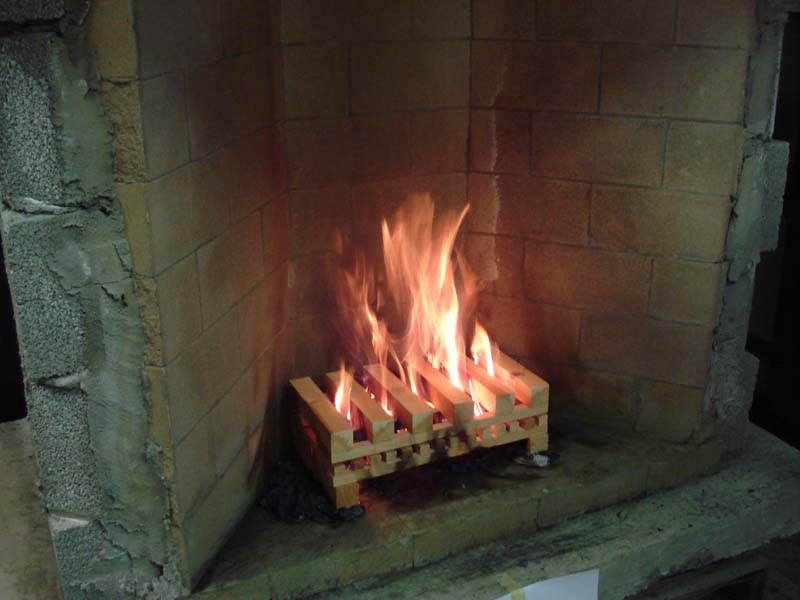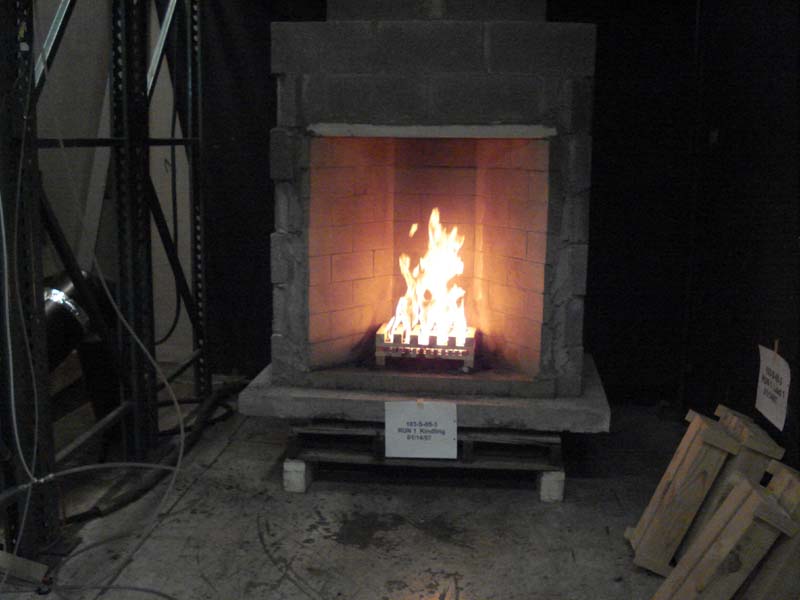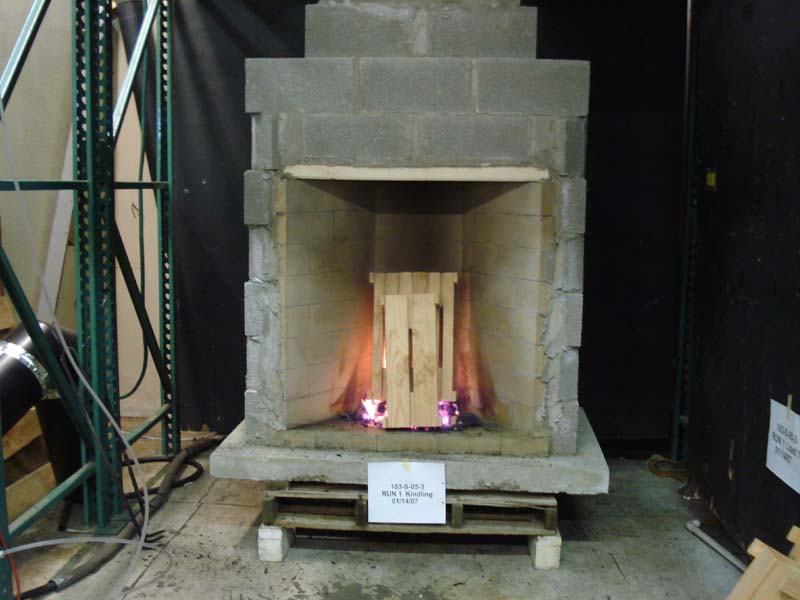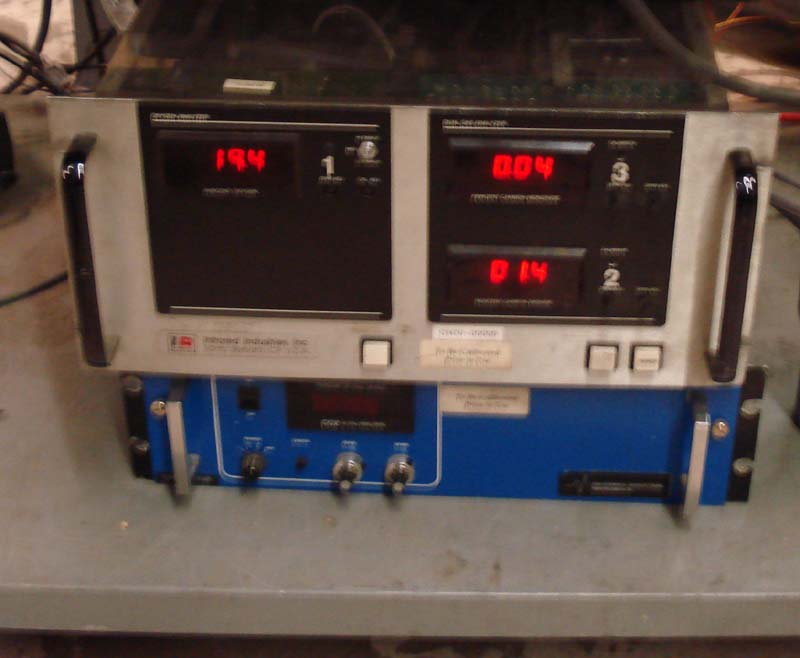Testing 36" Rumford at OMNI
January 15 - 17, 2008
|
1) Test OMNI algorithm. First crib went out. Second crib went out. Third crib - E2558 on two 2"x2" pieces. Comments Seemed like too much fuel added too infrequently. Suggestions: 1) Warm up fireplace - Section 3.4 starting instructions. 2) Ignite with half allowed loose paper and add rest as consumed. Start too suffocated. 3) Front spacer in first load throws smoke out.
4) Gasses: 5) Add back half of crib and wait as long as allowed - five or ten minutes - before adding front half. Even out fire. Actual test on 1/15/08 Did not warm up fireplace Used 3 sheets of paper - worked well Added cribs in two steps separated by 5 min, Seemed even out burn and abated smoke from front spacer a little.
Test one 1/15/08
Test four 1/17/08
Conclusion: Test one seemed pretty good. May be improved by adding less fuel more often but adding cribs over 5 minute allowed interval helped. |
|
2) Test Rumford to the existing ASTM E2558 standard.
Test Two 1/16/08
Test Three 1/17/08 Conclusion: The low mass crib (surprisingly) seemed to work fine in the larger masonry Rumford - IF the fireplace was warmed up. Other alternatives to compensate for the thermal mass of masonry are 1) to reduce the mass, insulate the box and make it more like a metal fireplace or 2) add enough more kindling to get the fire going. I like the warm fireplace because it's simple and works. Adding more kindling might be more acceptable since that's what a typical user would do the keep the fire burning. Is the percentage of O2 recovery stable? Since kindling never got O2 below 19.7 (compared with 19.0 in hot box) the reload wasn't until O2 recovered to 20.2 instead of 19.7 as in hot box which meant that and subsequent loads never got going. Would it be better to specify that the kindling crib take the O2 level down to 19.0 and/or that reloading be at an O2 reading of 19.7? In other words, if there is an optimum burn rate for each fireplace, starting hot might keep us above that optimum rate and starting cold might never allow us to get up to the optimum burn rate. How did the idea of a recovery percentage get started in the first place? Might it be better, more stable and more reproducible to control the absolute O2 levels and disregard the recovery percentages? 3) Try to determine optimum burn rate for Rumford. Due to time constraints we never addressed this issue and I continue to think the more vigorous the fire, the higher the efficiency and the lower emissions will be. I have never seen too big a fire in a Rumford.
|

ASTM Standard
Buckley Rumford Fireplaces
Copyright 1996 - 2008 Jim Buckley
All rights reserved.
webmaster
